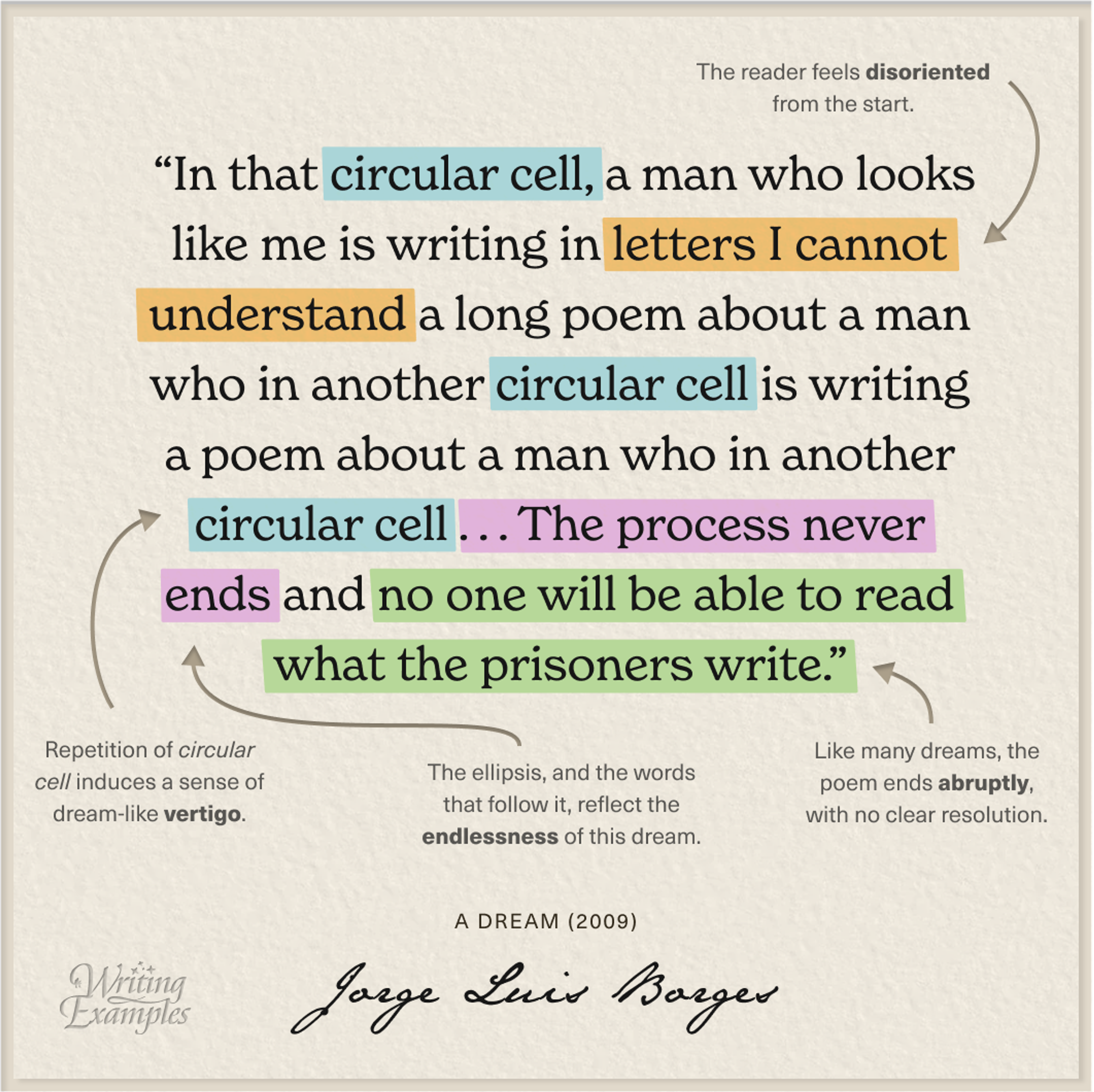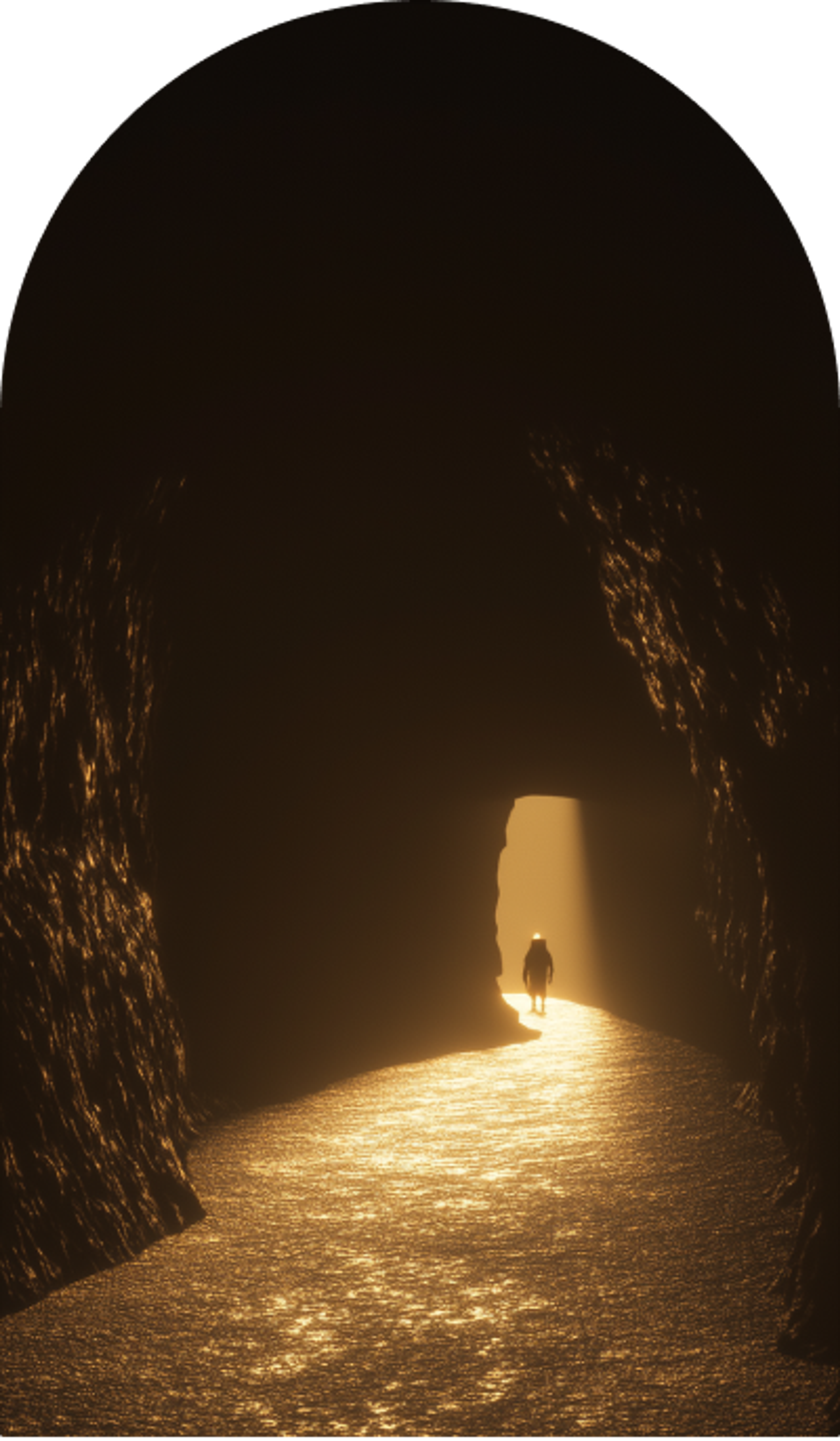HOW TO
Describe aDream
By
David Perell


his poem is called “A Dream” and its circular style reflects the looping sense of weightless vertigo we feel in the midst of one.
Borges starts by pulling the reader into a dream state. It’s easy to get lost in his first few words, and that’s exactly the point. The circularity of the writing mirrors the circularity of the cell, and the spiral keeps spinning and spinning and spinning, with no end point…
The writing is cryptic, almost puzzle-like. It goes everywhere and nowhere like an Escher painting. This circular logic, combined with abrupt transitions, matches the way dreams distort time by making it stretch and contract.
Dreams seldom end with closure, and this poem doesn’t either. Instead, we emerge at the end of the poem, dizzy and confused about whatever the hell we just experienced.
Writing about dreams is a rare case where the “clear writing is good writing” rule doesn’t apply. Dreams are rarely clear. If opaque riddles and fragments help you trace the textures of a dream, so be it.
Dreams are surreal, otherworldly enigmas. The way you write about them can be too.
Read More
Write like the Greats
New Writing Examples, right in your inbox.
“Beautiful, playful, and high-quality. Kudos.”
Clayton
from Missouri, USA



